What are the steps to re-execute a test case from UiPath Orchestrator?
What are the possible scenarios where Test Manager API can be used to integrate UiPath Test Manager with other tools?
How can an input argument be set for a Test Case in an existing Test Set?
According to best practices how can reusability be increased between individual test projects?
What actions can be done for test cases that contain data variation?
What does the UiPath CLI allow to do?
What happens once a Test Set execution starts in Test Manager?
What factors influence the calculation of coverage in the Descriptor Coverage feature in UiPath?
What happens with the attachment if an Attach Document activity in a workflow is run, as part of an automation job?
What are the steps to delete a test schedule in UiPath Orchestrator?
What is the purpose of UiPath Test Manager Hub?
How does the licensing model work for Testing runtimes in UiPath?
A developer, who has just discovered Test Suite, built a test case that checks if the SumWorkflow correctly performs the sum of 2 integers, using different input values from an Excel file.
What could be considered an improvement in the way the test was developed?
SumWorkflow:
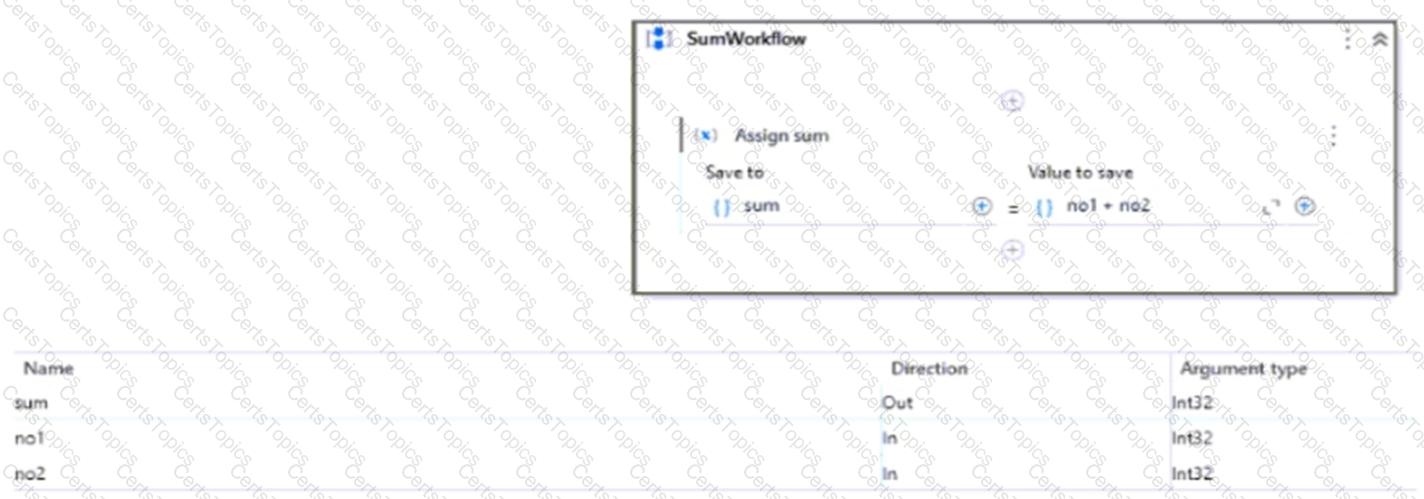
TestCase:
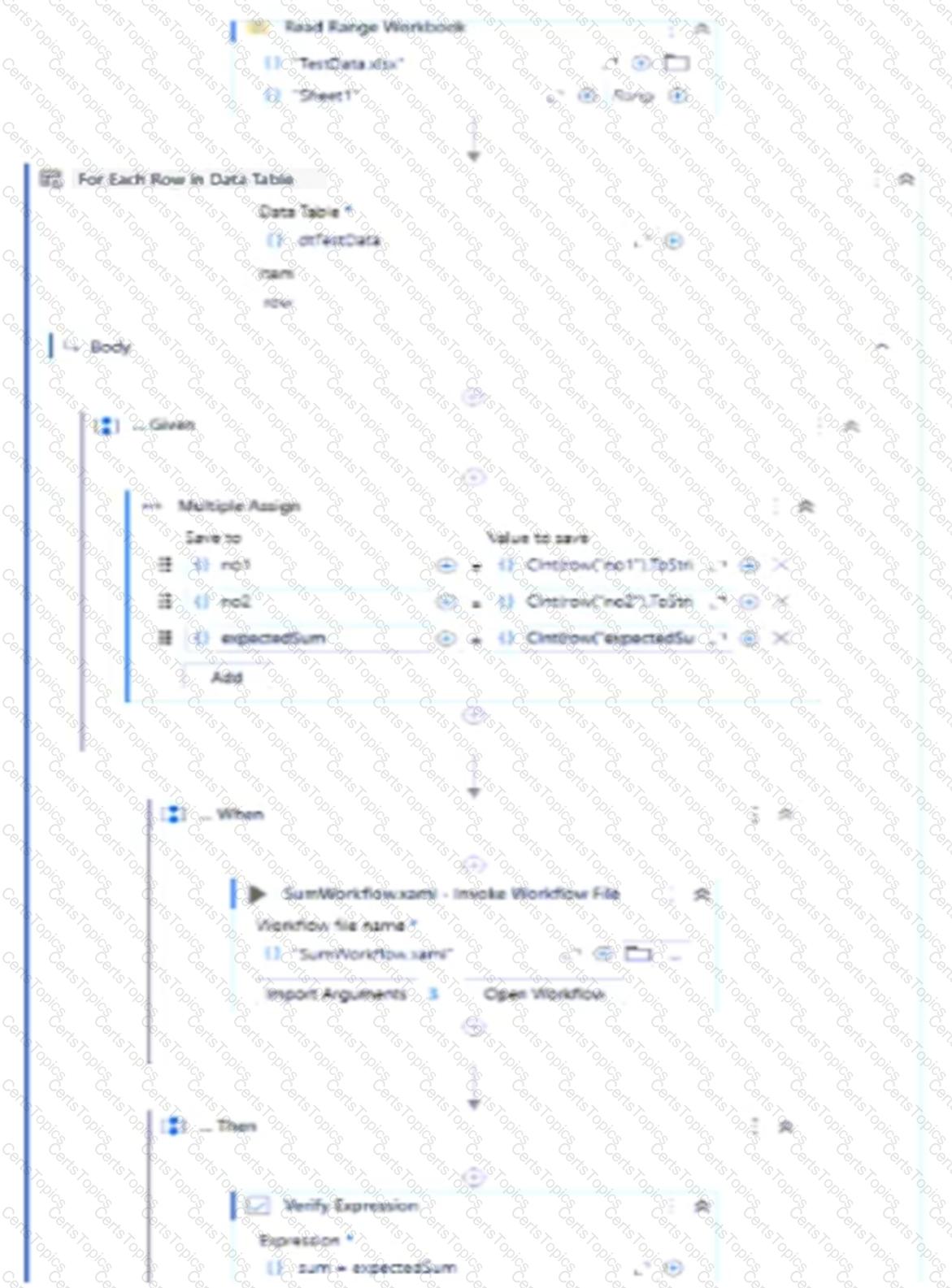
TestData.xlsx:
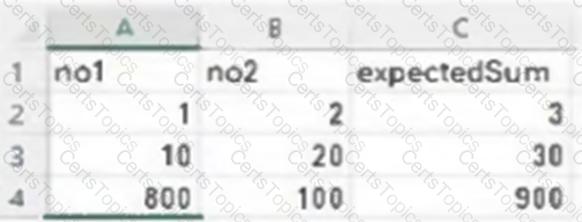
Where are Postman collection endpoint activities found after being imported into a Studio library?
When is it necessary to utilize the Mobile Device Manager?
Which of the following is an attribute of the Test Explorer results information?
What is the appropriate scenario to use the "Synchronize mock" action?
What needs to be provided in order to create a Test Data Queue from static Test Data in UiPath Studio?
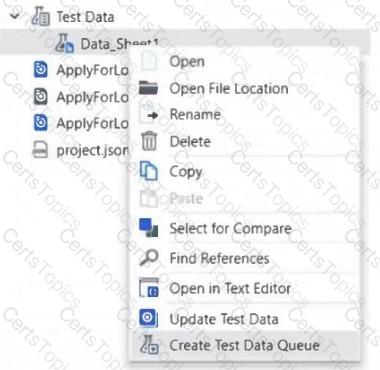
In which of the following cases is the Self-Hosted agent needed when creating a pipeline using the UiPath Integration for Azure DevOps?
How can manual steps be marked in a Test Case as passed or failed in the Manual Execution Assistant?
What does the Total Coverage KPI from the UiPath Test Manager Dashboard measure?
What is the maximum number of Projects that can be created in Test Manager?
What type of license is used for an Unattended Robot in development and testing mode, enabling it to execute both test cases and RPA processes?
How to document a test case using Task Capture?
A developer needs to design a coded automation that approves or denies a loan application based on the loan rate. How should the Execute() entry point method be declared if it needs to return the value for (IsLoanApproved), based on the loan rate (LoanRate)?
What type of data can be added to the Tester Comment field?
A developer has a test case created in Studio that is linked to a Test Data Queue in Orchestrator. Recently, the data in the Test Data Queue have been updated. What is the fastest way for the developer to test with the new test data?
In software testing what does the term "test case” refer to?
Where can the variations that have passed or failed for a data-driven test case in UiPath Studio be viewed?
Which are the types of coded automations in UiPath?
Considering the provided configuration for Workflow Analyzer Settings, how many testing rules applied will be classified as an "Error"?
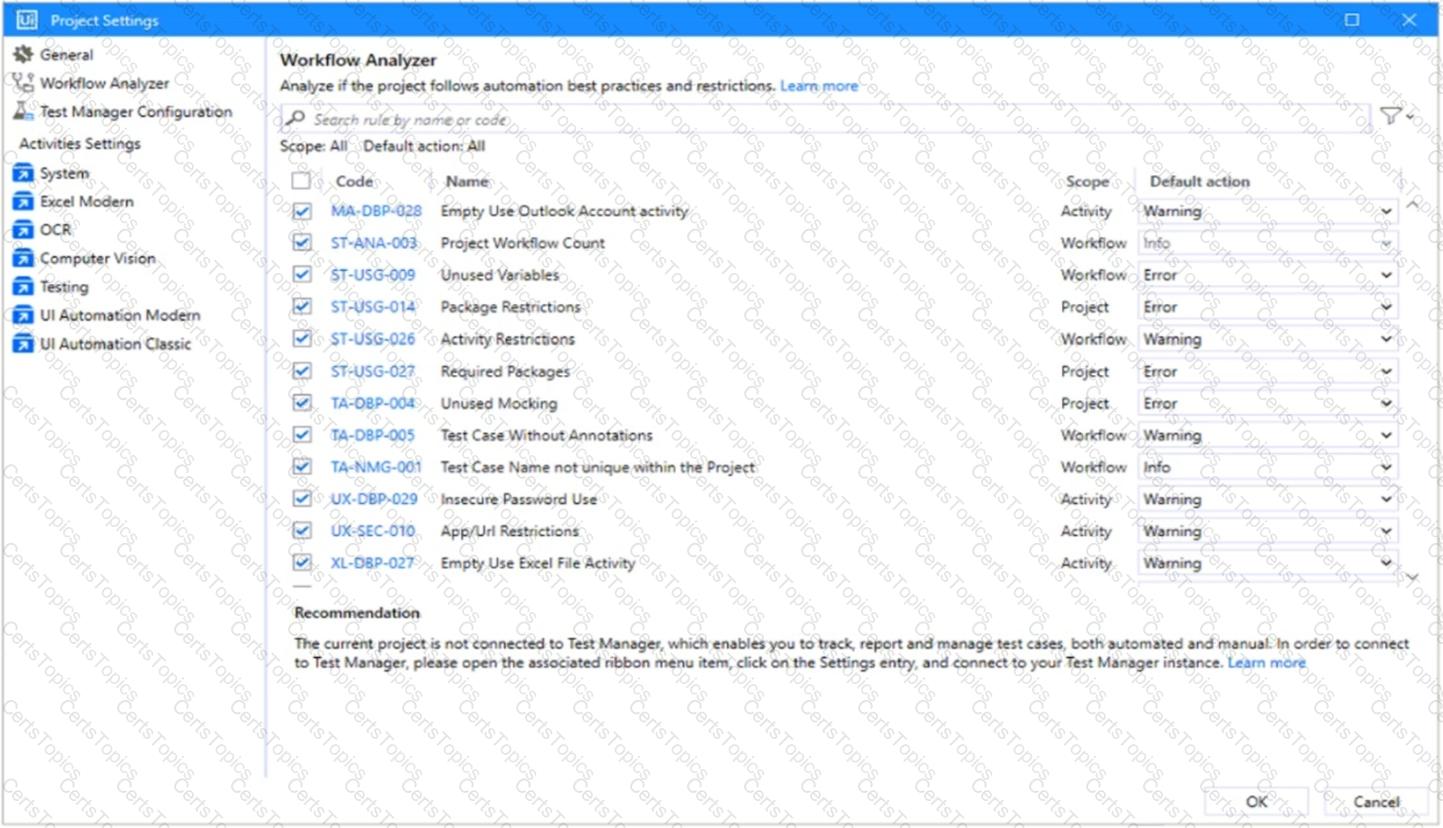
What is application testing in the context of UiPath?